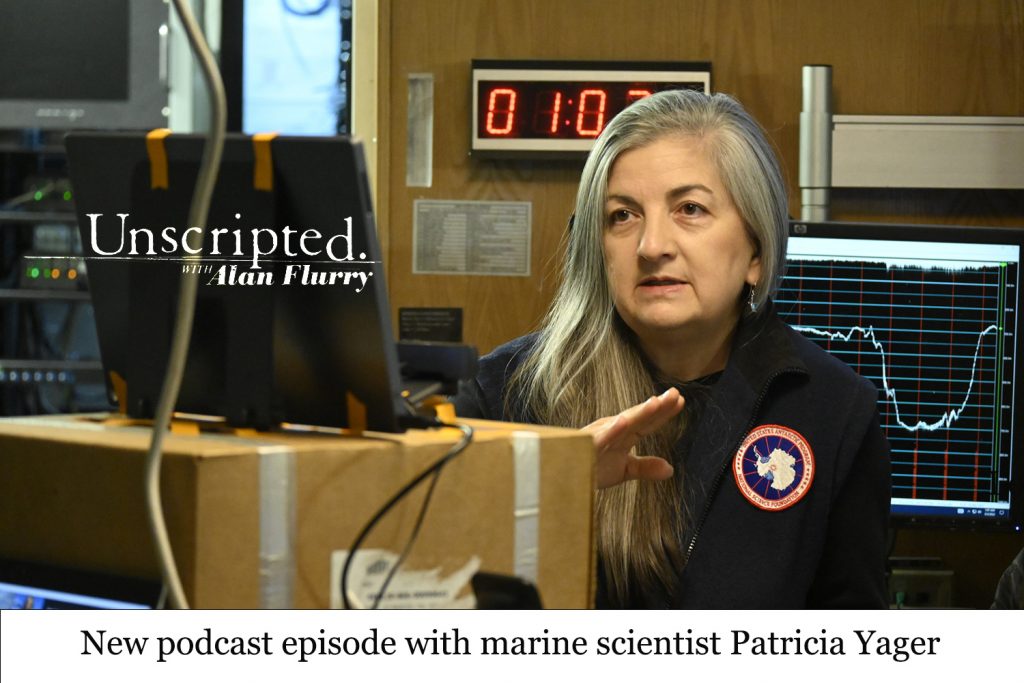
The new episode of my interview podcast Unscripted focuses on Patricia Yager, professor of marine sciences, and her recent experience co-leading a research expedition to the Amundsen Sea Polynya in western Antarctica.
While many research projects on the International Thwaites Glacier Collaboration were focused on sea level rise and the physical processes related to the melting, Yager served as co-chief scientist and lead P.I. on the project Artemis, designed to better understand the impact of melting glaciers and ice shelves on the coastal ocean’s biological productivity.
“The glaciers are not melting because the air temperature is warm,” Yager said in the interview. “The glaciers are melting because the ocean is warm.”
Listen to the interview on iTunes, Spotify, or wherever you get your podcasts and subscribe to Unscripted.







